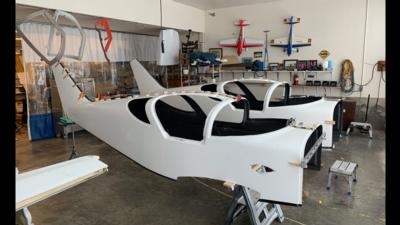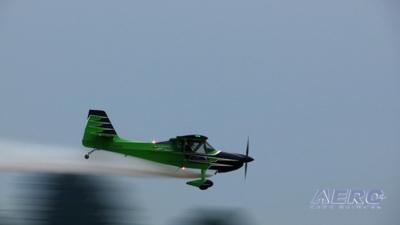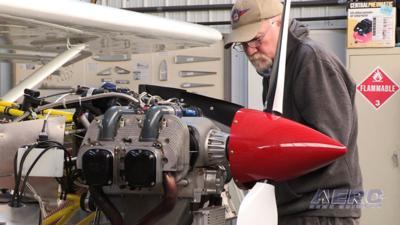Fri, Apr 02, 2021
Task-Based Phase I to Revolutionize Flight Testing
EAA has reported that the FAA has published draft guidance to implement an optional task-based Phase I program for Experimental Amateur-Built (E-AB) aircraft. Under the program, once an aircraft completes a flight test plan that meets FAA standards, Phase I is complete. The standard 25- or 40-hour flight test period for Phase I will remain an option for all E-AB, and Experimental Light-Sport (E-LSA) continues to carry a 5-hour test period.

The program is part of an upcoming update to Advisory Circular (AC) 90-89B. Flight test programs do not need specific approval by the FAA, but the Circular lays out certain required flight test points and requires the use of test cards for data collection in flight. Users of the EAA Flight Test Manual should find it a straightforward way to complete the requirements of the task-based Phase I program, but anyone may draft a flight test plan that meets the FAA's outline, including kit manufacturers and other experts.
Task-based Phase I ensures that every hour spent in flight testing is meaningful and is contributing to both validating the airworthiness of the aircraft and gathering the data necessary to build a detailed operating manual. This will benefit the builder in ensuring full exploration of the aircraft's operating envelope, and it will benefit subsequent owners in having access to quality data on the aircraft. In exchange for this work, the aircraft will be released from Phase I when it is ready, not based on an arbitrary time requirement.
"This is the result of more than eight years of work by EAA and the FAA and we couldn't be happier that it is now nearing completion," said Tom Charpentier, EAA Government Relations Director. "This will be a true paradigm shift in E-AB flight testing."
This program comes on the heels of EAA's publication of its Flight Test Manual in 2018, which has sold thousands of copies to date. EAA is continuously working to improve it and create new materials and programming based upon the manual.

Task-based Phase I is yet another example of the EAA working collaboratively with the FAA to achieve a win-win solution that benefits the community and enhances safety. The groundwork for this change was laid by the EAA/FAA working group that created the Additional Pilot Program (AC 90-116), which allows another pilot into the cockpit to enhance safety during flight testing.
The Advisory Circular is in draft form and comments will be accepted through April 29. Please note that the relevant language on Task-Based Phase I is housed in Chapter 1, Section 1 of the draft. The rest of the document contains advisory information on flight testing and is not part of the task-based program requirements.



More News
"The owners envisioned something modern and distinctive, yet deeply meaningful. We collaborated closely to refine the flag design so it complemented the aircraft’s contours w>[...]
Nonradar Arrival An aircraft arriving at an airport without radar service or at an airport served by a radar facility and radar contact has not been established or has been termina>[...]
From 2022 (YouTube Edition): Still Life with Verve David Uhl was born into a family of engineers and artists—a backdrop conducive to his gleaning a keen appreciation for the >[...]
Also: Electra Goes Military, Miami Air Taxi, Hypersonics Lab, MagniX HeliStrom Amazon’s Prime Air drones are back in the spotlight after one of its newest MK30 delivery drone>[...]
Also: Trailblazing Aviator Betty Stewart, Wind Farm Scrutiny, Chatham Ban Overturned, Airbus Shares Dive A Thunderbird pilot, ID'ed alternately as Thunderbird 5 or Thunderbird 6, (>[...]
 Aero-News: Quote of the Day (12.11.25)
Aero-News: Quote of the Day (12.11.25) ANN's Daily Aero-Term (12.11.25): Nonradar Arrival
ANN's Daily Aero-Term (12.11.25): Nonradar Arrival Classic Aero-TV: David Uhl and the Lofty Art of Aircraft Portraiture
Classic Aero-TV: David Uhl and the Lofty Art of Aircraft Portraiture Airborne-NextGen 12.09.25: Amazon Crash, China Rocket Accident, UAV Black Hawk
Airborne-NextGen 12.09.25: Amazon Crash, China Rocket Accident, UAV Black Hawk Airborne 12.05.25: Thunderbird Ejects, Lost Air india 737, Dynon Update
Airborne 12.05.25: Thunderbird Ejects, Lost Air india 737, Dynon Update







